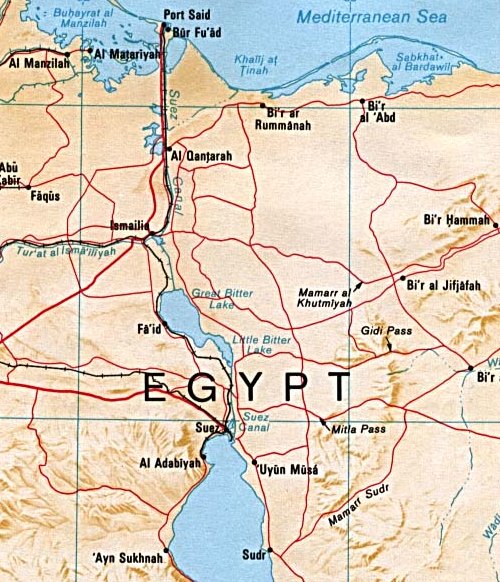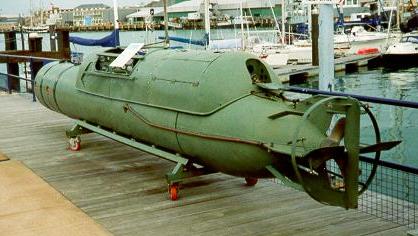|
Operation Raviv
Operation Raviv ( he, רביב, Drizzle), also known in Egypt as the Zaafarana accident ( ar, حادثة الزعفرانة) or the Ten-Hour War, was a mounted raid conducted by the Israeli Defence Forces (IDF) on Egypt's Red Sea coast during the War of Attrition. Taking place on September 9, 1969, Raviv was the sole major ground offensive undertaken by the IDF against Egypt throughout the war. The operation saw Israeli forces masquerading as Egyptian troops and using captured Arab armor. Background As the War of Attrition raged along the Suez Canal in the summer of 1969, Israel was hard-pressed to find a solution to Egypt's superiority in both manpower and artillery. With Operation Boxer it had begun employing the Israeli Air Force as "flying artillery", yet these operations were under the constant threat of expanding Egyptian air defences. Furthermore, the static nature of the war meant not all of Israel's assets, including its ground forces and their superior mobility, were bei ... [...More Info...] [...Related Items...] OR: [Wikipedia] [Google] [Baidu] |
War Of Attrition
The War of Attrition ( ar, حرب الاستنزاف, Ḥarb al-Istinzāf; he, מלחמת ההתשה, Milhemet haHatashah) involved fighting between Israel and Egypt, Jordan, the Palestine Liberation Organisation (PLO) and their allies from 1967 to 1970. Following the 1967 Six-Day War, no serious diplomatic efforts tried to resolve the issues at the heart of the Arab–Israeli conflict. The 1967 Arab League summit formulated in September the " three no's" policy: barring peace, recognition or negotiations with Israel. The Egyptian President Gamal Abdel Nasser believed that only military initiative would compel Israel or the international community to facilitate a full Israeli withdrawal from Sinai, and hostilities soon resumed along the Suez Canal. These initially took the form of limited artillery duels and small-scale incursions into Sinai, but by 1969, the Egyptian Army judged itself prepared for larger-scale operations. On March 8, 1969, Nasser proclaimed the official ... [...More Info...] [...Related Items...] OR: [Wikipedia] [Google] [Baidu] |
BTR-50
The BTR-50 (BTR stands for ''Bronetransporter'' (БТР, Бронетранспортер), literally "armored transporter") is a Soviet amphibious armored personnel carrier (APC) based on the PT-76 light tank. The BTR-50 is tracked, unlike most in the BTR series, which are wheeled. The BTR-50 shares many similarities with two other APCs, the OT-62 TOPAS and the Type 77. While the OT-62 is an improved copy of the BTR-50 developed jointly by Czechoslovakia and Poland, the Type 77, based on the Type 63 amphibious light tank developed by the People's Republic of China (PRC), is not a copy of the BTR-50. Description Like the PT-76, the BTR-50 has a flat, boat-shaped hull. Unlike the PT-76, it has a new superstructure added to the front of the vehicle. The hull of the BTR-50 is made of all-welded steel with the crew compartment in the front, the troop compartment in the center and the engine compartment at the rear. It has the ability to transport up to 20 fully equipped infantr ... [...More Info...] [...Related Items...] OR: [Wikipedia] [Google] [Baidu] |
Limpet Mines
A limpet mine is a type of naval mine attached to a target by magnets. It is so named because of its superficial similarity to the shape of the limpet, a type of sea snail that clings tightly to rocks or other hard surfaces. A swimmer or diver may attach the mine, which is usually designed with hollow compartments to give the mine just slight negative buoyancy, making it easier to handle underwater. Types of fuses Usually limpet mines are set off by a time fuse. They may also have an anti-handling device, making the mine explode if removed from the hull by enemy divers or by explosions. Sometimes limpet mines have been fitted with a small turbine which would detonate the mine after the ship had sailed a certain distance, so that it was likely to sink in navigable channels (to make access difficult for other ships) or deep water (out of reach of easy salvage) and making determination of the cause of the sinking more difficult. Development In December 1938, a new unit was ... [...More Info...] [...Related Items...] OR: [Wikipedia] [Google] [Baidu] |
Human Torpedo
Human torpedoes or manned torpedoes are a type of diver propulsion vehicle on which the diver rides, generally in a seated position behind a fairing. They were used as secret naval weapons in World War II. The basic concept is still in use. The name was commonly used to refer to the weapons that Italy, and later (with a larger version) Britain, deployed in the Mediterranean and used to attack ships in enemy harbors. The human torpedo concept has occasionally been used by recreational divers, although this use is closer to midget submarines. History of common wartime models The concept of a small, manned submarine carrying a bomb was developed and patented by a British naval officer in 1909, but was never used during the First World War. The Italian Navy experimented with a primitive tiny sub (Mignatta) carrying two men and a limpet mine: this craft successfully sank Austro-Hungarian battleship SMS ''Viribus Unitis'' on 1 November 1918. The first truly practical human to ... [...More Info...] [...Related Items...] OR: [Wikipedia] [Google] [Baidu] |
Ras Sadat
Ras or RAS may refer to: Arts and media * RAS Records Real Authentic Sound, a reggae record label * Rundfunk Anstalt Südtirol, a south Tyrolese public broadcasting service * Rás 1, an Icelandic radio station * Rás 2, an Icelandic radio station * Raise A Suilen, a Japanese band Organizations * Railway Air Services, a UK airline * Rajasthan Administrative Service, India * Remote Astronomical Society Observatory of New Mexico * Richard Allen Schools, a charter school system in Ohio, USA * Richardson Adventist School, now North Dallas Adventist Academy * IEEE Robotics and Automation Society * Royal Air Squadron, a flying club in the UK * Royal American Shows, an American travelling carnival company operating from the 1920s to the 1990s * Royal Asiatic Society of Great Britain and Ireland * Royal Astronomical Society, UK, founded 1820 * Russian Academy of Sciences Biology * RAAS, the renin–angiotensin system, a hormone system that regulates blood pressure * Recurrent aphthous ... [...More Info...] [...Related Items...] OR: [Wikipedia] [Google] [Baidu] |
Egyptian Navy
The Egyptian Navy ( ar, القوات البحرية المصرية, El-Quwwāt el-Bahareya el-Miṣriyya, Egyptian Navy Forces), also known as the Egyptian Naval Force, is the maritime branch of the Egyptian Armed Forces. It is the largest navy in the Middle East as well as Africa, and is the twelfth largest (by the number of vessels) navy in the world. The navy protects more than 2,000 kilometers of coastline of the Mediterranean Sea and the Red Sea, defense of approaches to the Suez Canal, and it also supports for army operations. The majority of the modern Egyptian Navy was created with the help of the Soviet Union in the 1960s. The navy received ships in the 1980s from China and other Western sources. In 1989, the Egyptian Navy had 18,000 personnel as well as 2,000 personnel in the Coast Guard. The navy received ships from the US in 1990. US shipbuilder Swiftships has built around 30 boats for the Egyptian Navy including mine hunters, survey vessels, and both steel and alumini ... [...More Info...] [...Related Items...] OR: [Wikipedia] [Google] [Baidu] |
Ras Sudar
Ras Sedr (Also spelled: Ras Sidr, Ras Sudr, or Ras Sudar; ar, راس سدر) is an Egyptian town located on the Gulf of Suez and the Red Sea coast. It is a part of the South Sinai Governorate, and consists of three areas: Wadi Sidr, Abu Sidr and Soerp. The region has been known since ancient biblical times. Ras Sudr was the last point of Sinai that was conquered by the Israelis on 8 June 1967 during the Six Day War, the town had a readily event known as the Ras Sedr Massacre when Israelis killed Egyptian POW. Geography Ras Sidr is 200 km from Cairo and approx 60 km from the Ahmed Hamdi Tunnel crossing in Suez, on the western side of the Sinai Peninsula, and almost opposite the resort of Ayn El Sokhna on the opposite Red Sea coastline. The main travelling road to Ras Sidr is by way of the main Suez to Sharm el Sheikh Road through almost total desert terrain. The road is dotted with farms where olives, tamarinds, and fruits are grown. The majority of the town and outly ... [...More Info...] [...Related Items...] OR: [Wikipedia] [Google] [Baidu] |
Unit 707
Unit may refer to: Arts and entertainment * UNIT, a fictional military organization in the science fiction television series ''Doctor Who'' * Unit of action, a discrete piece of action (or beat) in a theatrical presentation Music * ''Unit'' (album), 1997 album by the Australian band Regurgitator * The Units, a synthpunk band Television * ''The Unit'', an American television series * '' The Unit: Idol Rebooting Project'', South Korean reality TV survival show Business * Stock keeping unit, a discrete inventory management construct * Strategic business unit, a profit center which focuses on product offering and market segment * Unit of account, a monetary unit of measurement * Unit coin, a small coin or medallion (usually military), bearing an organization's insignia or emblem * Work unit, the name given to a place of employment in the People's Republic of China Science and technology Science and medicine * Unit, a vessel or section of a chemical plant * Blood unit, a measurement ... [...More Info...] [...Related Items...] OR: [Wikipedia] [Google] [Baidu] |
Shayetet 13
Shayetet 13 ( he, שייטת 13, lit. ''Flotilla 13'') is a unit of the Israeli Navy and one of the primary sayeret ''(reconnaissance)'' units of the Israel Defense Forces. Shayetet 13 specializes in sea-to-land incursions, counter-terrorism, sabotage, maritime intelligence gathering, maritime hostage rescue, and boarding. The unit is trained for sea, air and land actions. The unit has taken part in almost all of Israel's major wars, as well as other actions. The unit is one of the most secretive in the Israeli military. The details of many missions and identities of active operatives are kept highly classified. The unit is respected as among the best of the world's special forces, and is compared to the US Navy SEALs and Britain's Special Boat Service. Unlike many other Israeli Special Forces Units which take men only for their 36-month mandatory service, volunteers for Shayetet 13 must agree to service at least four and a half years (18 months over and above the normal commi ... [...More Info...] [...Related Items...] OR: [Wikipedia] [Google] [Baidu] |
Landing Craft
Landing craft are small and medium seagoing watercraft, such as boats and barges, used to convey a landing force (infantry and vehicles) from the sea to the shore during an amphibious assault. The term excludes landing ships, which are larger. Production of landing craft peaked during World War II, with a significant number of different designs produced in large quantities by the United Kingdom and United States. Because of the need to run up onto a suitable beach, World War II landing craft were flat-bottomed, and many designs had a flat front, often with a lowerable ramp, rather than a normal bow. This made them difficult to control and very uncomfortable in rough seas. The control point (too rudimentary to call a bridge on LCA and similar craft) was normally at the extreme rear of the vessel, as were the engines. In all cases, they were known by an abbreviation derived from the official name rather than by the full title. History In the days of sail, the ship's boats were us ... [...More Info...] [...Related Items...] OR: [Wikipedia] [Google] [Baidu] |





